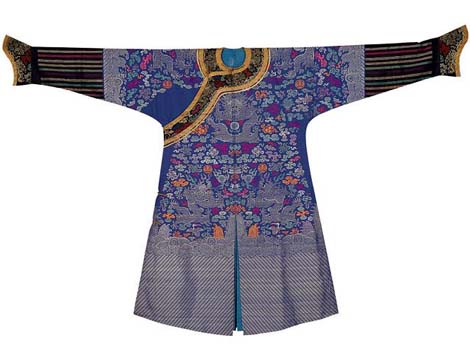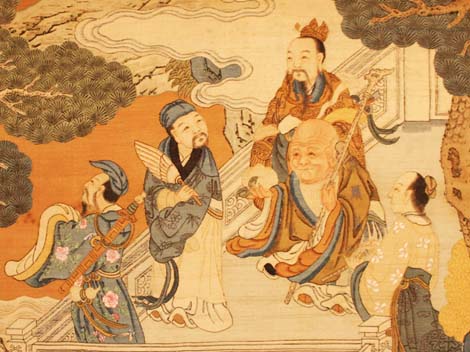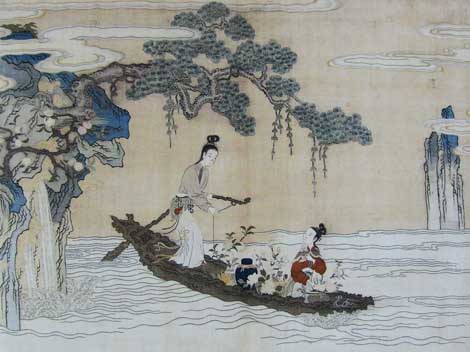
Kesi is a special type of weaving peculiar to China.It is different from embroidery but rather similar to the making of tapestry.

It is done on a wooden handloom with raw silk as the warp and boiled-off silk as the weft. The weft threads are usually of dozens of colours and are separately reeled in many small shuttles. First the artisan makes on the warp a sketchy drawing of the pattern to be woven and then guides a shuttle with the weft thread of a specified colour across the warp threads--almost never throughout the entire width but only where that particular colour is needed. So, this is a form of weaving patch by patch. One could also say it represents an integration of the skills of silk-weaving and painting. It is necessary to make frequent changes of the shuttles (i.e. threads of different colours), and a small piece of work requires thousands of changes to finish.

The completed piece shows the design neatly and in equal exquisiteness on both sides.
The art has its beginnings in the Han and Wei dynasties but blossomed during the Song (960-1279), producing a great master in Zhu Kerou. The Picture of Ducklings in Lotus Pond woven by him, now kept in the Shanghai Museum, is considered a national treasure. The art of kesi was introduced to Japan during the Ming Dynasty (1368-1644). The belt for the Japanese kimono,which is woven in this way, is still called by the Japanese "Chinese Ming decorative belt".





